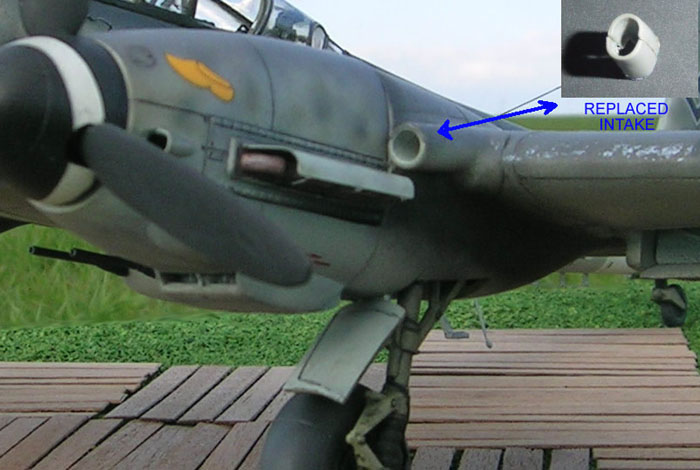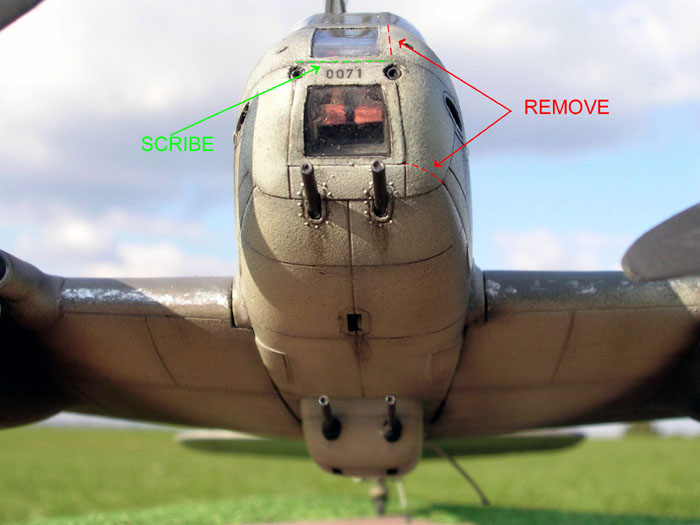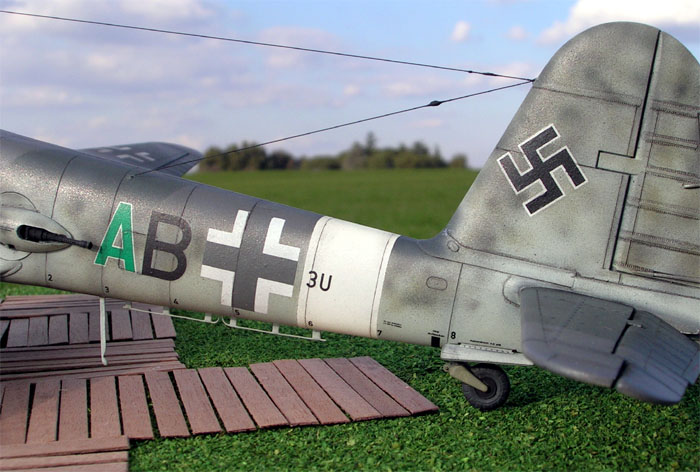|
1/48 Revell scale
Me 410B-1/U2/R4
“Hornisse – Zerstörer”
by Emanuele Pravatà
|
 |
|
Messerschmitt 410B-1/U2/R4 “Hornisse –
Zerstörer” |

HyperScale is proudly supported by
Squadron
The history of the Messerschmitt
Me 410 began with the disappointing performance of its predecessor, the
Me 210, which had itself the ambitious task to replace the Bf 110, the
first of the Zerstörers (Destroyers) dynasty. Messerschmitt had
to develop a further version of the Bf 110 (the G series), due to the
catastrophic results from the Me 210! The Me 410 was essentially a
corrected Me 210 with 1m lengthened fuselage, automatic wing slats and
new engines; the Me 410-B series were introduced in the early 1944 and
were equipped with more powerful 1.900hp DB603G engines and specific
armament. The heavily armed Zerstörer variant was therefore best
suited to intercept the unescorted allied bombers formations, which
began to attack deeply the Third Reich since late 1943. However, as soon
as the Allies were able to escort their bombers over the German
territory with single-engined fighters, the Zerstörer groups
begun to suffer heavier and heavier losses. They were withdrawn from
service before the end of the war.
I decided to represent the
aircraft showed on p.42 of Squadron/Signal publications #1147 “Me
210/410 in action”: the Me 410 B1/U2/R4 of Stab I./ZG 26 Holzschuh
flown by Lieutenant Wenko. The picture shows it behind another Me 410 of
the same gruppe, so that only its individual letter “A” -in
green- is clearly visible, while the staffel identification
letter is partially covered. I studied the picture for a while and in
the end concluded that the staffel identification letter was much
probably a “B”, just like the one of the foreground aircraft, that is
coded “3U + GB”. So I thought that the correct codes for my model would
have been “3U + AB”.
Aeromaster’s sheet #48-360
provides the decals for a I./ZG26 “3U + AA” aircraft, with the
individual “A” letter in green as I needed, so I just cut away the
second letter and printed myself a black “B”, together with the “Werk”
number printed on Wenko’s aircraft nose.

Click the thumbnails below to view larger
images:
This is Revell's 1/48 scale
Messerschmitt Me 410B-1.
Overall engineering is very
good, panel lines and cockpit details are amazing, so the kit was built
almost out of the box, except for Eduard’s photo etched detail set
#48243 and some other improvements:
- Fixed the incorrect shape
and length of the supercharger intakes; they should be exactly
round-shaped, while those provided in the kit have a curious “0”
section and are too long. They were cut away from the assembled
wing, replaced with two Evergreen 4,8mm tubes and “blended” to the
wing root. Replacing the supercharger intakes is definitely not
difficult nor time-consuming, while it makes the kit much more
accurate. (See picture for details).

- My reference walkaround
pictures clearly show the correct panel lines pattern for the nose
of the Me 410; these are not matched after the initial assembly of
the fuselage. In particular, the clear item #90 includes in one
piece part of the metal fuselage struts (solid) and the two front
glasses (that you will preserve clear); moreover, it has a
structural role in the fuselage assembly, too. A horizontal panel
line between the two above mentioned glasses is also missing, and
has to be scribed. There are two other “undesired” joints where the
fuselage main halves meet the lower gun bay cowling part, in the
lower section of the nose, too (see picture for details). I fixed
this by scribing and applying either CA glue or putty as required.

- Some minor improvements
included lowered rear ailerons, scratch built blind-landing antenna
and handles on the starboard fuselage side, the two MG17 gun barrels
added inside their nose ports and other details in the cockpit and
on the inner canopy. Eduard’s photo etched set also provides the
correct (and very thin) items to represent the asymmetrical flame
dampers and exhausts stains array.

The last issue was the canopy
assembly. Revell’s effort to depict te characteristic “double-sided”
canopy detailing is rather noteworthy, but the assembly could be a
tricky task, due to the congenital fit flaws of the clear parts. For
example, the front clear item on my sample was too narrow, so I had to
glue it in place while a toothpick section was keeping it wide enough to
fit the fuselage and then, when dried, I removed the toothpick. In
general, it is highly recommended to perform several dry tests before
gluing the clear parts! After a successful assembly, the joint on top of
the two canopy halves could be hidden. I used the dedicated Eduard’s
masks set for painting, but found my sample very inaccurate and
definitely disappointing.
The standard Luftwaffe
fighters camo scheme, RLM 74/75/76 and 02/75/74 mottling on fuselage
sides, was airbrushed after priming. Reference pictures for late 1944
subjects clearly show the evidence of heavy duty conditions: I tried to
represent this by applying either pre- and post-shading and a general
heavy weathering on the model. The exhaust stains were intentionally
exaggerated, in order to simulate the poor fuel quality Luftwaffe
warbirds suffered from towards the end of the war. Many thanks to
Mauro di Massimo, who kindly gave me some advice I will surely
follow in my next projects!
Pictures were taken with my
Nikon Coolpix 3700 digital camera in natural sunlight.
I’ve always found the Me 410 to
be a beautiful and interesting warbird, despite its tormented
development and career: its curious blunt nose, its complex greenhouse
and cockpit, the very high technology equipment and fire power made it
one of the most fascinating WWII aircraft.
- Squadron/Signal Aircraft
#147: “Me 210/410 in action”
- Aeromaster Decal set
#48-360: “ME 410 Pt.III, Hornisse – Zerstörer Collection”
- Eduard Photo etched set
#48243
- Eduard Express Mask set
#XF012
Click the thumbnails below to view larger
images:
Model, Images and Text
Copyright © 2005 by
Emanuele Pravatà
Page Created 27 March, 2005
Last Updated
29 March, 2005
Back to
HyperScale Main Page |
Home
| What's New |
Features |
Gallery |
Reviews |
Reference |
Forum |
Search